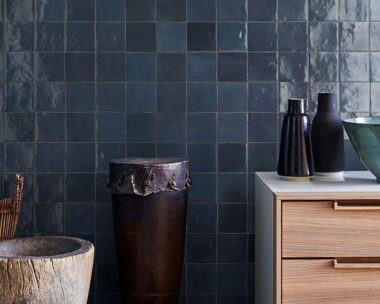Garden Editor Lee Ann Bramwell spills the beans on trying something new in the garden this year
I’ve never been fond of pittosporums – I’ve seen far too many pitto hedges that have hiked up their skirts to expose their nether regions and it’s not attractive. All the foliage is on top with nothing below. They look like elderly ladies with spindly legs clad in torn black stockings.
But a recent need for something small, bun-like and a specific colour to blend into an existing grass garden pushed me in the direction of golf ball pittosporums, which are never going to get leggy (I hope) because they’re fat, round, ground-hugging globes. Ranged alongside the pittos at the nursery was a whole heap of other ball-like shrubs that introduced themselves as buxus. Again, I’ve never been a buxus girl, but needs must, so I came home with one to give it a try.
The Partner was astonished. “You’re not going to clip that thing into some horrible topiary ball, are you?” he asked incredulously. “Elephant,” I muttered darkly. Of course, I won’t be trimming the buxus into an elephant, a pony or anything else – I’m more curious to see what it does when left to its own devices. I’m halfway to believing it grows naturally into balls, spirals and ducks, but hopefully that’s not the case.
The appealing thing about buxus is that it has beautiful foliage that comes in a range of sizes and colours. I like its density and lushness, and the fact that it looks tidy and well behaved. Whether these habits will prevail when it’s not being attacked with the clippers every other day remains to be seen.
It’s sad, really. Buxus goes to all that trouble of making small, pale green-lemon flowers and nobody notices. Possibly they get chopped off with all that endless clipping and never grow to maturity. Mine, I promise you, will flower. The plant buxus is commonly called box in the UK and boxwood in North America. It’s native to western and southern Europe, south-west, southern and eastern Asia, Madagascar, Africa, northernmost South America, Mexico, Central America and the Caribbean. I’m told it’s an easy plant to grow, happy in acid or alkaline soils, in sand or clay, in harsh dry places or deep shade. It’s not fond of boggy soil or very windy sites, but other than that, it doesn’t need a lot. It can even stand very severe droughts when established. I’m liking it more and more.
Throw on any fertiliser with nitrogen in it a couple of times during the growing season and water it in – about one teaspoon per plant will do the trick. Then give it a spray with your conventional or organic fungicides and insecticides when you’re spraying the other plants.

Buxus microphylla
Buxus sempervirens (English box) is the most popular box hedging variety available here. It’s the type that’s grown in the old established English garden landscapes, much loved for its bushy, scented foliage. It will grow 2m x 2m, maybe bigger if given the chance.
Buxus microphylla var. japonica (Japanese box) is about twice as speedy as its English relation and a much brighter, lighter green. Its lime foliage is very shiny and it grows about 1.5-metres high.
Buxus Tide Hill also has fine, lime-green leaves. This modern hybrid is quite small, though, and only reaches about 20cm when mature, so it’s good for low hedges.

Buxus suffruticosa
Buxus Suffruticosa (Dutch box) is another shortie – a smaller version of English box that will only reach about 25cm tall. It’s naturally slow growing and needs very little trimming. It’s probably one that’s ideal for the lazy gardener.
Buxus Variegata is popular for its golden colour and providing contrast in the garden. In terms of speed, it’s a sedan rather than a sports car, but once you get it going, its performance improves. Buxus Green Gem is another modern hybrid plant, which is a bit of a slowcoach. It has dark-green leaves and eventually gets up to about a metre tall.

Buxus balearica
Buxus Balearica is an ancient form commonly known as large-leaved box. It has a vigorous, upright growth habit and is easy to grow in sun or part shade. It’s very hardy.
Buxus Graham Blandy could be your man if you haven’t got the room for a topiary elephant. This one is an upright fella with a naturally slender, columnar habit, so it’s good for growing in narrow spaces.




